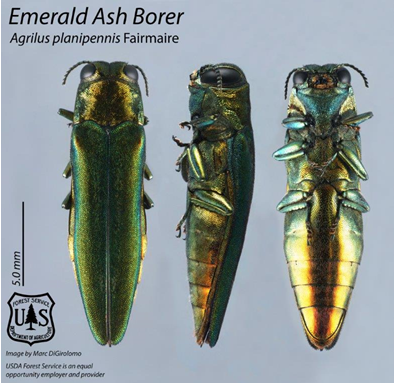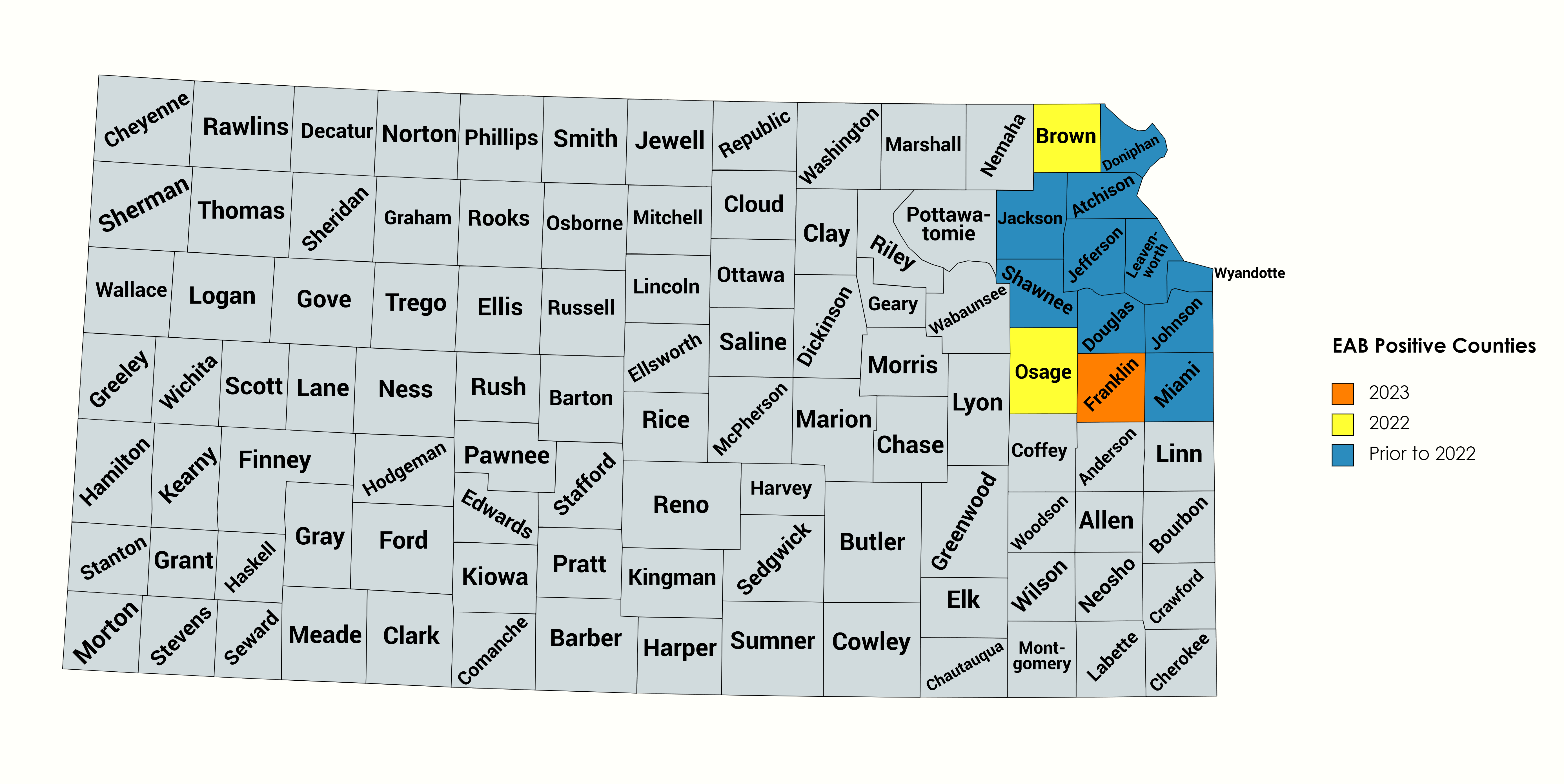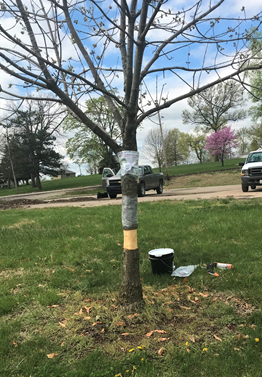
Regulation
The emerald ash borer is a pest of ash trees native to East Asia. It was first discovered in North America in 2002 in the Detroit, Michigan, area. Since then, it has killed millions of ash trees and caused thousands more to be removed to slow its spread.
In December 2020, the USDA’s Animal and Plant Health Inspection Service (APHIS) published a final rule to remove the federal domestic EAB quarantine regulations. As a result, KDA has also lifted its quarantine effective March 1st, 2021 and instead resources will be diverted to education, outreach, survey and biocontrol.
Initially, local county-level quarantines were established to prohibit movement of ash trees and other related items, but those quarantines have been largely ineffective in preventing the spread of the pest. KDA will continue to survey and monitor for EAB, and will direct available resources toward non-regulatory options for management and containment of the pest, including collaborative efforts with industry organizations to educate communities about the threat of EAB and participation in biological control opportunities available through USDA-APHIS.
Order Rescinding Permanent EAB Quarantine

If you suspect emerald ash borer on your property and are not in one of the detected counties (see above), please call 785-564-6698 or e-mail your name, address, phone number and pictures of the suspect tree to KDA.PPWC@ks.gov.
All ash trees native to Kansas are susceptible to infestation by the emerald ash borer. Trees become infested when adult beetles lay eggs on the bark. Eggs hatch into larvae that bore into the tree, tunneling between the bark and wood, disrupting water and nutrient movement, eventually killing the tree. Emerald ash borer appears to prefer trees under stress but can kill perfectly healthy trees.
Emerald ash borer is responsible for killing or damaging 20 million ash trees in Michigan, Indiana, Ohio and Ontario, Canada. Financially, the United States risks an economic loss of $20 billion to $60 billion because of this pest. A complete devastation of ash trees could seriously affect our ecosystem.
Without government action and cooperation from the public, firewood dealers, arborists and the nursery industry, emerald ash borer will be introduced in Kansas. Preventing its spread to non-present counties is far more cost-effective than trying to manage it as an established pest.
Survey & Management
Read about Kansas Department of Agriculture’s emerald ash borer survey work on our Pest Surveys page.
We aid United States Department of Agriculture-Animal & Plant Health Inspection Service in their efforts to establish biological control agents to help manage emerald ash borer populations in Kansas. Three parasitic biological control agents are being released in Kansas; more info on emerald ash borer biocontrol.

You Can Help
Since the emerald ash borer's initial introduction into the United States, it has been spread to many areas of the country by campers and homeowners who unknowingly moved infested firewood to un-infested areas where the beetles emerged and infested new ash trees.
You can help slow the spread of the emerald ash borer into Kansas by not moving firewood across county lines. When buying wood for your home, buy only locally grown and harvested firewood. When camping, buy your firewood near your destination and burn all that you bring. You can read more about firewood safety on our site or at Don’t Move Firewood.
Emerald ash borer educational materials, including ID cards and brochures, are available through the Kansas Department of Agriculture's Plant Protection and Weed Control program. Call us at (785) 564-6698 or e-mail your name and address to KDA.PPWC@ks.gov.
Calls us or email us too, if you think you may have found symptoms of an emerald ash borer infestation in non-quarantine counties in Kansas. If you suspect emerald ash borer symptoms on trees in quarantine counties, please call your county extension agent.
Additional Info